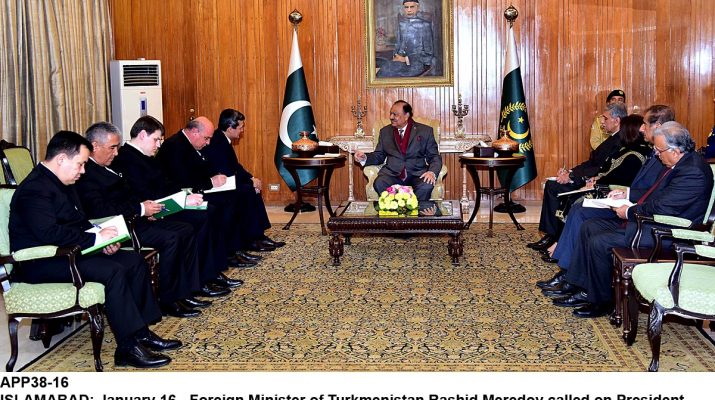By Reema Shaukat
The relations between Pakistan and India have been at the straight line with several dips all along their history. Both countries have had at least four armed conflicts with several near misses. Militaries from both sides have been claiming laurels for their actions against each other. Few incidents have however provided compelling evidence to prove not only their success but also the appreciation. Sinking of Indian Navy ship Khukri by PN submarine Hangor on 9th of Dec, 1971 in Indian waters stands prominent in this list. As first of its kind this operation after WWII, the successful attack by Pakistan Navy submarine Hangor on two Indian Navy ships Kirpan and Khukri, damaging earlier and sinking the latter, has been lauded and studied by the world navies including our eastern neighbour. The professionalism, perseverance and chivalry displayed by PN is therefore acknowledged on 9 December every year as Hangor Day.
The Hangor’s kill underscored importance of submarine warfare between the two countries which resulted in rapid development of “capability and intent” by both the belligerents post 1971. As per AutoJournalism data and sources, currently Indian submarine fleet has grown to 20 platforms, three of which are nuclear powered. In future India plans to induct 19 more submarines, 12 nuclear powered and 7 diesel electric. Pakistan has five submarines and has ordered 8 AIP fitted from China. Pakistan also possesses three shallow water submarines each weighing 110 tonnes.
The sustenance and stealth make submarines a good tool for espionage, reconnaissance, surveillance and collection of vital information about the adversary’s sea and maritime activities, albeit UN Convention on Law of Seas (UNCLOS) which does not allow a state to carry out manoeuvres or exercises in the EEZ and in the continental shelf of another coastal state without its consent. Indian Navy while attempting to capitalise on this feature of its submarines has been effectively checkmated by Pakistan Navy on various occasions. Since November 2016, Indian submarines have been at least thrice detected and warded off Pakistani waters by Pakistan Navy. Convincing evidences to these incidents have also been provided to the media; leaving Indian Navy with no choice but to keep close-mouthed. A brief account of these encounters reveal that on 14 Nov 2016, a Type 209 submarine was detected between Gwadar and Ormara which was veered off Pakistani waters. On 4th March, 2020, Scorpène-class submarine INS Kalvari was “detected and localised” some 86 nautical miles from Gwadar. On 16th Oct, 2021 another Indian submarine was detected approximately 283km (176 miles) south of Karachi which was ultimately hushed away.
One can discern few conclusions from failed yet recurrent Indian attempts of submarine espionage against Pakistan. Firstly, the Indians are hell bent on collecting data on Pakistan’s maritime activities despite their recurrent detections by Pakistan Navy assets. Their interest to maintain presence south of our coast especially around Gwadar is significant. Needless to emphasise upon, Gwadar gained prominence as soon as the CPEC was launched by the Chinese. Due to its excellent location, it is rightly a jewel in the CPEC crown. While USA and allies are trying to strangle China on road component of BRI, Gwadar offers Chinese an astounding opportunity to accomplish their objectives through the belt component of BRI. Only on 30th of Nov 2021 during his inaugural address, the MI6 chief Richard Moore said that China was one of the biggest threats to Britain and its allies. The “adversaries” of China are up to making a collective effort against the country via formation of alliances in the shape of QUAD, QUAD plus, Middle Eastern QUAD etc. India being a member of these arrangements has to prove herself worthy of the job and their near permanent presence in the area is therefore an attempt to establish their substance. However, Pakistan Navy which has the responsibility of safeguarding its waters has proven to be daunting against Indian designs. Secondly, Indian Navy despite being passionate about the submarine warfare has not been able to prove its mettle in the game. Not that it has not been able to achieve any significant gain during any armed conflict, their submarines have been repeatedly identified, caught and hushed away by Pakistan Navy. Their operations were thus abandoned and jeopardised.
Another hallmark of Indian Navy is the serious accidents ranging from sinking of submarine in the harbour to outbreak of major fires on-board. Maritime Study Forum, Islamabad based think tank identifies that INS Sindhughosh met collision in 2008; INS Sindhurakshak had fire on-board in 2010 and suffered flooding leading to its sinking in 2013; INS Shankush caught fire in 2010; INS Sindhuratna had a major fire on-board in 2014 and INS Arihant had faced a major damage due to flooding in 2017 making her out of action for nearly nine months. Such a flabbergasted record of Indian submarine service speaks volume about their professional acumen. In the words of Cdre(r) Obaidullah, Senior Defence Analyst; if the Indians wish to play this game, they must first learn it. After all, it is not enough to only have the intent yet the capability should also be compelling. Thirdly, contrary to the Indians, Pakistan Navy submarine service during its 57 years of meritorious service has never had any accident which can cause a submarine unseaworthy. Besides, it has the honour of hunting and killing its rightful prey whenever opportunity arose. The expertise that Pakistan Navy has gained in submarine warfare has also been aptly demonstrated through detection and sabotaging Indian submarines operations in Pakistani waters.
The legacy of Hangor crowned with competence, determination and gallantry has never been left to lurk by its successors even after 50 years of achieving the iconic success. Rather, it has been turned into professional prowess which is the hallmark of Pakistan Navy.
The writer works at Institute of Regional Studies, Islamabad.
The Hangor Legacy
By Reema Shaukat The relations between Pakistan and India have been at the straight line with several dips all along their history. Both countries have had at least four armed conflicts with several near misses. Militaries from both sides have been claiming laurels for their actions against each other. Few incidents have however provided compelling […]












